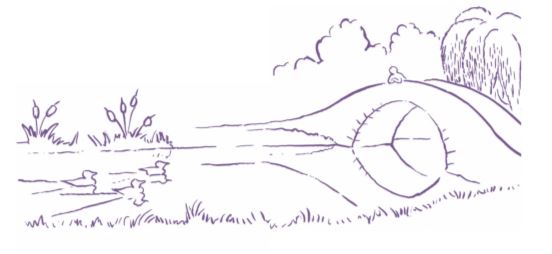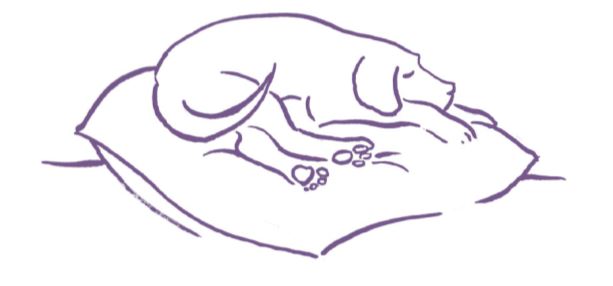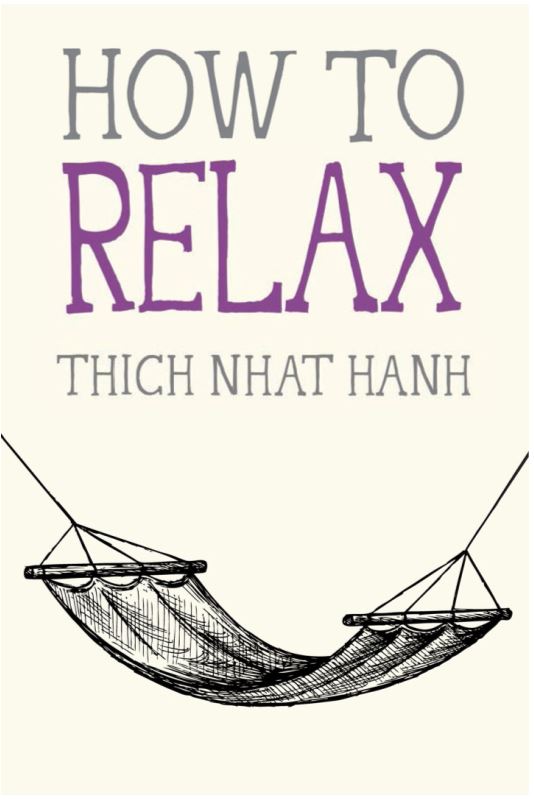You don’t need to set aside special time for resting and relaxing. You don’t need a special pillow or any fancy equipment. You don’t need a whole hour. In fact, now is a very good time to relax.
You are probably breathing in and out right this moment. If you can close your eyes for a moment, do so. This will help you pay attention to your breath. Your body is doing so many things right now. Your heart is beating. Your lungs are inhaling and exhaling air. Blood is traveling through your veins. Without effort, your body is both working and relaxed.
Resting
Whenever animals in the forest are wounded, they rest. They look for a very quiet place and just stay there without moving for many days. They know it’s the best way for their body to heal. During this time they may not even eat or drink. The wisdom of stopping and healing is still alive in animals, but we human beings have lost the capacity to rest.
Healing

We human beings have lost confidence in the body just knowing what to do. If we have time alone with ourselves, we panic and try to do many different things. Mindful breathing helps us to relearn the art of resting. Mindful breathing is like a loving parent cradling a baby, saying, “Don’t worry, I’ll take good care of you; just rest.”
Awareness of breathing
Your breathing is a stable, solid ground where you can take refuge. No matter what thoughts, emotions, and perceptions are going on inside you, your breath is always there, like a faithful friend. Whenever you’re carried away by thinking, overwhelmed by strong emotions, or feeling restless and dispersed, return to your breathing. Bring body and mind together and anchor your mind. Become aware of the air coming in and going out of your body. With awareness of the breath, our breathing naturally becomes light, calm, and peaceful. At any time of the day or night, whether you’re walking, driving, working in the garden, or sitting at the computer, you can return to the peaceful refuge of your own breath.
Resting poem
At any moment, we can say this small poem to ourselves and take a mini-rest. This poem is like a tiny vacation, except that it brings you back to your true home instead of taking you away from it.
Breathing in, I know I am breathing in.
Breathing out, I know I am breathing out.
You can even shorten this poem; it works just as well:
In.
Out.
Calm water
Each of us is like the waves and also like the water. Sometimes we’re excited, noisy, and agitated like the waves. Sometimes we’re tranquil like still water. When water is calm, it reflects the blue sky, the clouds, and the trees. Sometimes, whether we’re at home, work, or school, we become tired, agitated, or unhappy and we need to transform into calm water. We already have calmness in us; we just need to know how to make it manifest.
Meditation
To meditate means to pay full attention to something. It doesn’t mean to run away from life. Instead it’s an opportunity to look deeply into ourselves and into the situation we’re in.
Stopping: The first aspect of meditation

Meditation has two aspects. The first is stopping (shamatha in Sanskrit). We run throughout our whole life, chasing after some idea of happiness. Stopping means to stop our running, our forgetfulness, and our being caught in the past or the future. We come home to the present moment where life is available. The present moment contains every moment. Here we can touch our ancestors, our children, and their children, even if
they haven’t been born yet. We calm our body and emotions through the practice of mindful breathing, mindful walking, and mindful sitting. Shamatha is also the practice of concentrating, so we can live deeply each moment of our life and touch the deepest level of our being.
Stop first
If we can’t rest, it’s because we haven’t stopped running. We began running a long time ago. We continue to run, even in our sleep. We think that happiness and well-being aren’t possible in the present. If you can stop and establish yourself in the here and the now, you will see that there are many elements of happiness available in this moment, more than enough for you to be happy. Even if there are a few things in the present that you dislike, there are still plenty of positive conditions for your happiness. When you walk in the garden, you may see that a tree is dying and so you feel sad and aren’t able to enjoy the rest of the garden that is still beautiful. If you look again, you can see that the garden is still beautiful, and you can enjoy it.
Looking deeply: The second aspect of meditation
The second aspect of meditation is looking deeply (vipashyana in Sanskrit) in order to see the true nature of things. Understanding is a great gift. Your daily life conducted in mindfulness is also a great gift; this too is the practice of meditation. Mindfulness carries within it concentration and understanding.
Mindfulness in daily life
Mindfulness is the continuous practice of touching deeply every moment of daily life. To be mindful is to be truly present with your body and your mind, to harmonize your intentions and actions, and to be in harmony with those around you. We don’t need to make a separate time for this outside of our daily activities. We can practice mindfulness in every moment of the day—in the kitchen, the bathroom, or the garden, and as we go from one place to another. We can do the same things we always do—walking, sitting, working, eating, and so on—with mindful awareness of what we’re doing. Our mind is with our
actions.

➛ Part of a series of how-to titles by Zen Master Thich Nhat Hanh that introduce beginners to and remind seasoned practitioners of the essentials of mindfulness practice, How to Relax was first published in 2015 by Parallax Press. It provides inspiration and clear, simple directions for exploring mindfulness meditation. With sections on healing, relief from nonstop thinking, transforming unpleasant sounds, solitude, being at peace, and more, How to Relax includes meditations to help you achieve the benefits of relaxation no matter where you are. The post above is a selection of excerpts.

Yes, yes. Mindfulness is alwsys available anytime. Before I even studied buddhist philosophy I would find that washing the dishes after evening meals was very relaxing because my mind and body were only washing one thing at a time. It was not a chore, but a time of refuge from a busy day. The warm water, the view out the window was very calming. My mind calm and dishes oh so clean! Even with a machine to wash, I still enjoy doing this manually, bringing peace. How fortunate I get to was dishes 🙂
Thank you, dear Max, for sharing about your happy experience of washing the dishes with relaxation and peace 🍽🙏.
A lotus for you,
The Plum Village App team
A wonderful reading!
You can try relaxing music for meditation also.